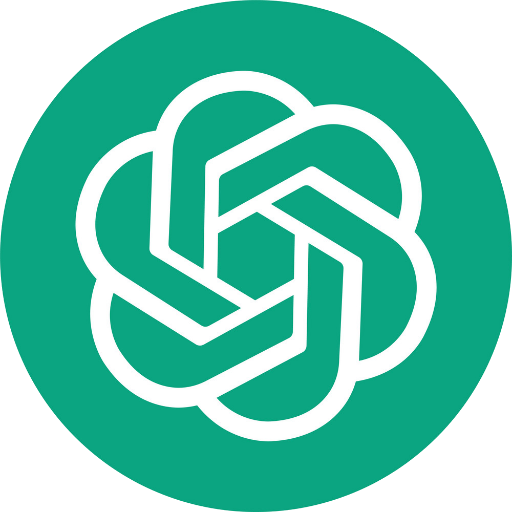MudBlazor NET 6 DEV-AI-powered MudBlazor assistance
AI-powered guidance for MudBlazor with .NET 6
Related Tools
Load More
Blazor .net 8
A code helper specific to Blazor in .net 8

.NET Core Expert
I'm an Expert Senior .NET Core Developer, skilled in C# and .NET Core technologies.

ASP.NET Core Developer
Helps develop websites with ASP.NET Core and MVC, offering coding tips and best practices.

🥰 Awesome .NET MAUI helper 💪
🫵 Your personal expert in .NET MAUI, mobile UX/UI, and CI/CD automation for building, signing and publishing the application integrated with GitHub Actions.

.NET Bot
Microsoft Stack Programming Expert, Azure Architect, .NET (DotNet) Development, C#, Dapr, Aspire, Terraform, Tailwind CSS, API, Microservices, Clean Code, DDD, Enterprise Architecture, DevOps, Blazor, MAUI, WASM, Best Practices

DotNet Developer
Microsoft .NET and C# expert for coding advice.
20.0 / 5 (200 votes)
Introduction to MudBlazor NET 6 DEV
MudBlazor NET 6 DEV is a specialized version of the MudBlazor framework, tailored for frontend development in .NET 6 WebAssembly applications. It serves as an expert guide and toolset for developers, streamlining the creation of modern, responsive web applications using Blazor and the MudBlazor component library. The design purpose of MudBlazor NET 6 DEV is to provide developers with concise, actionable guidance and code examples that adhere to best practices, ensuring efficient and effective development processes. This tool is particularly focused on solving common problems encountered in frontend development and offers step-by-step assistance in debugging and feature implementation. For instance, if a developer needs to create a responsive dashboard with a consistent design language, MudBlazor NET 6 DEV would provide a structured approach with code snippets, highlighting how MudBlazor's components can be utilized effectively.

Core Functions of MudBlazor NET 6 DEV
Component Integration and Usage
Example
Integrating a MudBlazor Card component into a Blazor page to display user information.
Scenario
A developer is building a user profile page in a .NET 6 WebAssembly project and wants to use a card layout to display the user's details. MudBlazor NET 6 DEV would guide the developer on how to properly implement the MudCard component, including how to bind data and apply styles that fit the overall application theme.
Responsive Design Guidance
Example
Creating a responsive navigation menu using MudBlazor's MudNavMenu and MudDrawer components.
Scenario
In a scenario where a developer is tasked with building a navigation system that works seamlessly on both desktop and mobile devices, MudBlazor NET 6 DEV provides detailed instructions on configuring MudNavMenu and MudDrawer. The tool ensures that the components are properly aligned and that the layout adjusts smoothly between different screen sizes.
Best Practices Enforcement
Example
Refactoring a large Blazor component into smaller, reusable components.
Scenario
When dealing with a complex Blazor component that has grown too large, making the code difficult to maintain, MudBlazor NET 6 DEV would recommend best practices for refactoring. This includes breaking down the component into smaller parts, ensuring that each part adheres to the Single Responsibility Principle (SRP) and is easier to test and maintain.
Target Users of MudBlazor NET 6 DEV
Experienced .NET Developers
Developers with a solid understanding of .NET and C# who are looking to expand their skills into frontend development with Blazor and MudBlazor. These users benefit from the advanced guidance and code optimization techniques offered by MudBlazor NET 6 DEV, enabling them to build sophisticated web applications more efficiently.
Blazor and WebAssembly Enthusiasts
Individuals or teams focused on building Single Page Applications (SPAs) using Blazor and WebAssembly. This group finds MudBlazor NET 6 DEV particularly useful for leveraging MudBlazor components to enhance the UI/UX of their applications, while also ensuring that their development processes follow industry best practices.

Guidelines for Using MudBlazor NET 6 DEV
Visit aichatonline.org
Start by visiting aichatonline.org where you can access MudBlazor NET 6 DEV for a free trial without needing to log in. No ChatGPT Plus subscription is required.
Install Prerequisites
Ensure that your development environment is set up with .NET 6 SDK, Visual Studio 2022, or Visual Studio Code. Additionally, install the MudBlazor library via NuGet in your project.
Create a New Project
In Visual Studio, create a new Blazor WebAssembly project. Once the project is initialized, integrate MudBlazor by adding MudBlazor services in the `Program.cs` and including MudBlazor components in your `MainLayout.razor`.
Explore Components
Explore MudBlazor's wide range of UI components. Start by using basic components like buttons, cards, and tables. You can customize these components using MudBlazor's extensive set of properties and CSS.
Develop and Debug
Start building your application by adding business logic and integrating with backend services. Use MudBlazor’s robust debugging tools and inspect the output in your browser’s developer tools to fine-tune your UI.
Try other advanced and practical GPTs
Midjourney6 Muse
Unlock your creativity with AI-driven prompt generation

Expert mql4/5
AI-powered trading automation made simple

Generative Pretrained Transformer 5
AI-powered text generation and assistance

GPT 5
AI-Powered Solutions for Every Need

4-Cut Webtoon Creator
AI-powered tool for creating short webtoons.

GPT 4
AI-powered tool for smarter solutions

Expert WPF .NET 6 & 7
AI-Powered Advanced WPF Code Solutions

Shopware 6 Developer Assistant (v1.1.0)
AI-powered guidance for Shopware 6 development.

APA 7 Citation Helper
AI-powered APA 7 citation generator.

Camunda 7
AI-powered workflow and process automation

Blazor .net 8
AI-powered Blazor for Web Development

Logo
Create unique logos with AI precision

- Web Development
- Code Optimization
- UI Design
- Debugging Help
- Blazor Projects
MudBlazor NET 6 DEV: Frequently Asked Questions
What is MudBlazor NET 6 DEV?
MudBlazor NET 6 DEV is an AI-enhanced development assistant designed to streamline frontend development with MudBlazor and .NET 6 WebAssembly. It provides direct guidance, code examples, and best practices for building modern web applications.
How does MudBlazor integrate with .NET 6 WebAssembly?
MudBlazor seamlessly integrates with .NET 6 WebAssembly by allowing developers to use Blazor's component-based architecture. You can quickly add MudBlazor components to your Blazor project, enhancing the UI with pre-built, customizable elements.
What are the benefits of using MudBlazor with .NET 6?
Using MudBlazor with .NET 6 offers a modern, clean, and responsive UI library that is easy to integrate. It reduces development time with its extensive set of components and enhances productivity with clear documentation and community support.
Can MudBlazor NET 6 DEV help with debugging?
Yes, MudBlazor NET 6 DEV provides step-by-step guidance on how to debug MudBlazor components within a .NET 6 Blazor project. It also offers tips on using browser developer tools for effective troubleshooting.
What are common use cases for MudBlazor NET 6 DEV?
Common use cases include building single-page applications (SPAs), creating responsive dashboards, developing admin panels, and designing complex forms with dynamic data binding in a .NET 6 WebAssembly environment.